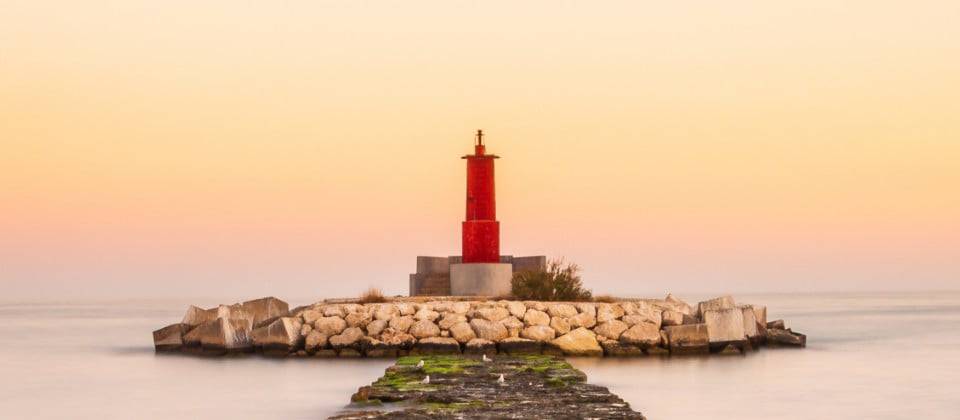Easter in Spain: 10 things you need to know about Semana Santa
Gathering twigs of cat willow to make an Easter tree. Painting chicken eggs. Hide chocolate eggs for your offspring (and perhaps find a melted Easter egg behind a bush somewhere in the corner of your garden in late August). An Easter brunch with your closest loved ones and soft-boiled eggs à volonté. Sucking down such industrial quantities of Easter eggs and eating yourself into such indigestion that by Ascension Day you are still having convulsions at the word "chocolate.
Behold a summary of the average Easter weekend in Belgium. All well and good, but chances are you won't think once about the suffering of Jesus, after all, the man to whom we owe all those chocolate treats. Things are a little different in Spain.
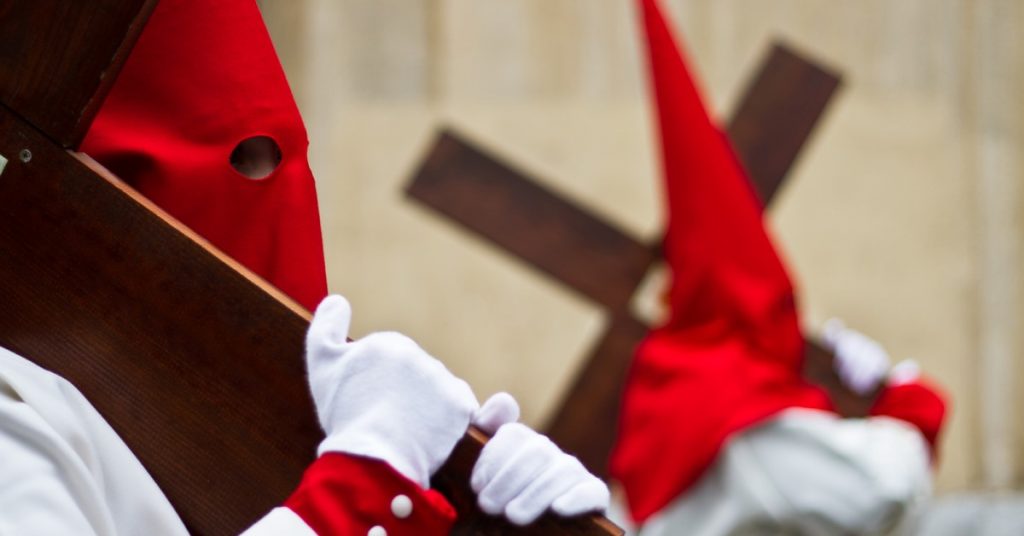
Holy Week, or Semana Santa, is an important religious celebration there. If possible, even more significant than Christmas. Young and old take to the streets to marvel at Christian processions. Beware, it is not just bitter seriousness. During the Easter season, Spaniards also take extensive time to eat and drink with family and friends, to take time off and enjoy the burgeoning spring. They are and remain and epicureans.
Here are 10 more things you need to know about Easter in Spain.
1. Easter lasts more than a week
Quite frankly, Holy Week effectively lasts a week, we hear you thinking. But admit it, in Belgium we celebrate Easter mainly on Easter Sunday itself. Not so in primal Catholic Spain. There they adhere fully to the tradition of Semana Santa, a fat week of festivities. It begins on Palm Sunday(Domingo de Ramos), when believers receive a blessed palm or olive branch in church, and does not end until Easter Monday (Lunes de Pascua). Or even a few days later.
On the other days of Silent Week, from Holy Monday through Maundy Thursday to Good Friday, processions go out every day. Both in the morning, in the afternoon, in the evening and even at night such a procession (see point 2) can be admired, especially in the larger cities in Andalusia. So here, no morning searches for hidden Easter eggs, no Easter Bunny or bells of Rome. The religious side of the celebration predominates in Spain.
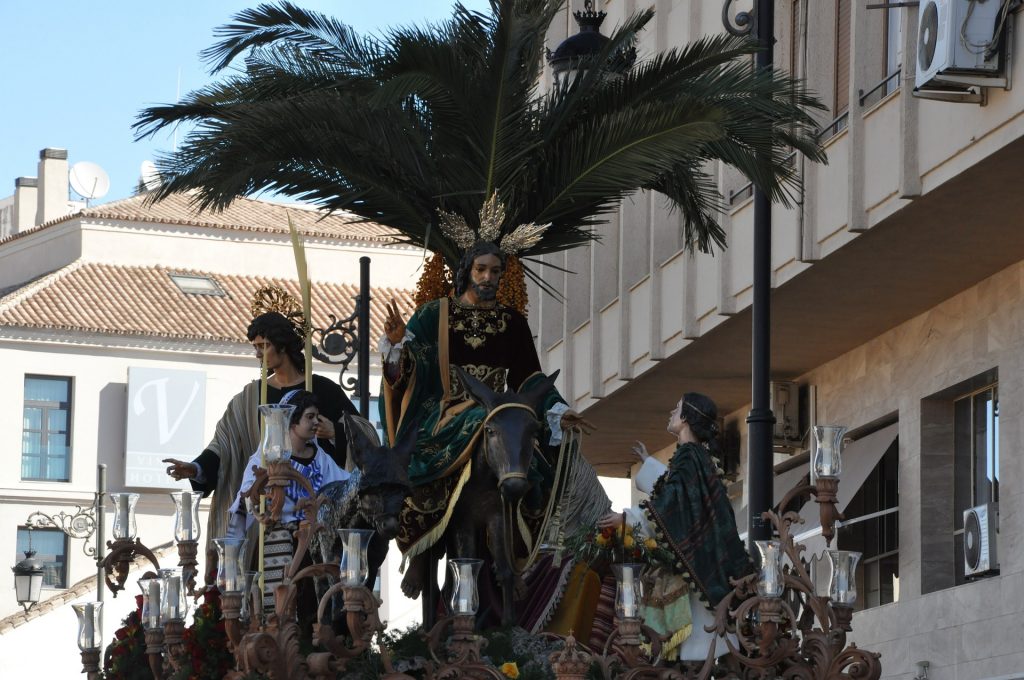
A more prosaic note for those who want to use the Easter period to fulfill their administrative obligations: make sure in advance whether government offices and the like are open during Holy Week. In fact, some services close their doors all week. Only a few days after Easter Monday did life in Spain get back on track.
2. You don't have to be religious to enjoy the processions
If Easter in Spain is known for one thing, it is the religious processions organized by brotherhoods. Those associations, called cofredias in Spanish, have been marching out with their own procession since the Middle Ages. Members parade from their own parish to the city's cathedral. In doing so, they lug pasos, floats with images of a suffering Jesus or a biblical scene such as the Judas kiss. The statues appear from the church gates and are met with howls or cheers from the parishioners. The fraternities make it a state affair to dress their pasos as picture perfect as possible, including with flowers and candles. Some are true works of art.
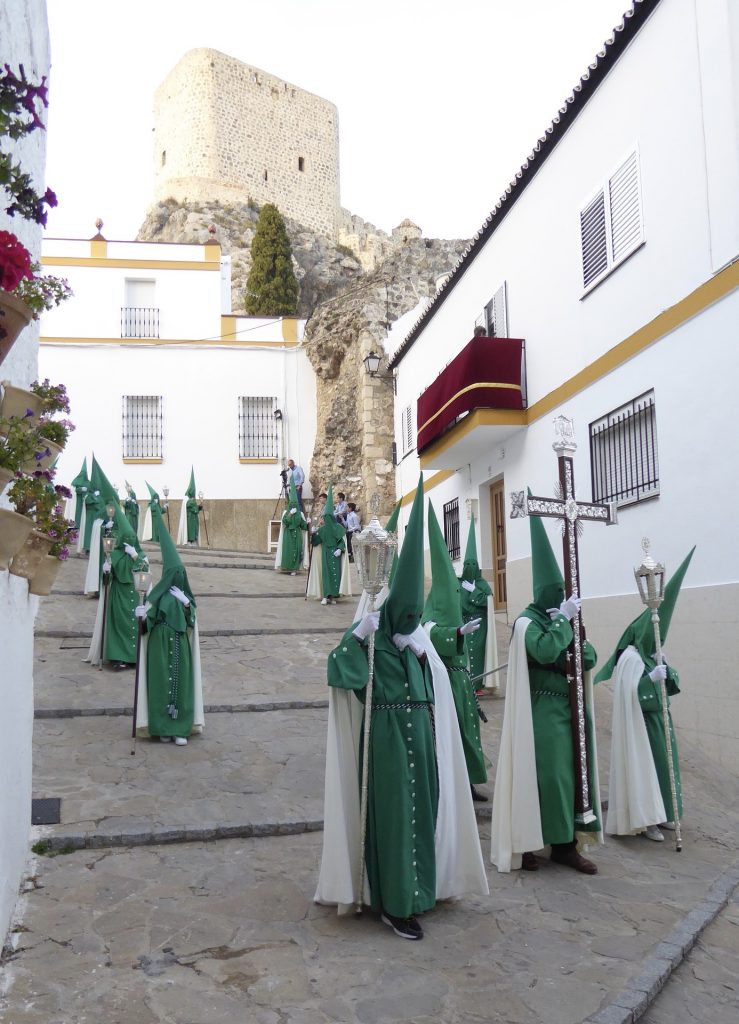
In front, the giant cross moves to the rhythm of the brass band, blowing and drumming mournful religious music. At the back of the procession appears the Virgen, the Virgin Mary, a statue with a meter-long cloak crying crystal tears for the death of Jesus. Spain adores Maria. Spectators cry warm tears along with them and sing lamentations from balconies in flamenco style, called saeta. In front of each front door, old men with flat caps and a rosary in their hands sat watching the procession. The procession could last for hours, but the eagerness of the Spaniards did not subside for a moment. You definitely do not need to mumble half a dozen Hail Marys daily to enjoy these scenes.
3. Spanish Easter traditions are centuries old
You think your distant ancestors were already happily munching away chocolate from Easter bells? Feel free to live on in your illusion, but chocolate as we know it has not existed for very long at all. Then Spanish traditions have been going on a little longer.
King Ferdinand III Spain freed Spain from under the yoke of the Moors in the 13th century. In its wake, the first fraternities were established. The processions were a good way to teach Juan with the cap the Easter story. Later, during the Counter Reformation, they formed a reaction against austere Protestantism. Catholicism coquetted with a somewhat carnivalescent image. And living well and intensely, that philosophy also fits the Spaniard like a glove.
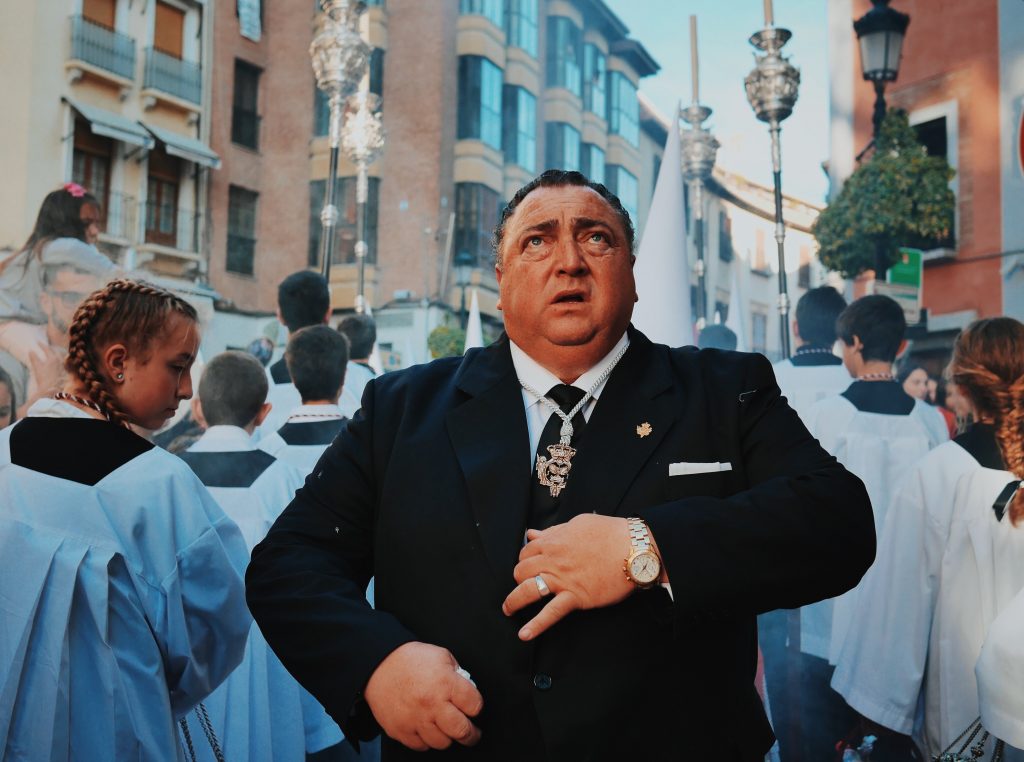
Not only are the traditions ancient, but some pasos have been around for several centuries. It says a lot about the devotion of the fraternities that they were able to keep their rolling stock in such tiptop order. After Easter, the pompons may gather dust behind lock and key for another year.
4. Participants in processions had better buy themselves a fitness subscription
We are not going to claim that the members of a fraternity all possess a resemblance of muscles à la Jean-Claude Van Damme. More to the point, the bulk lug around a cerveza belly to say Usted to. Still: walking along in such a procession is certainly no, uh, piece of cake. Yet not for the costaleros, the bearers of the ostentation, leaden beds of wood, brass and silver.
Because those are sometimes behemoths of 5,000 pounds. Not even the teeth of John Massis would venture into it. Sometimes it takes 250 sturdy men to maneuver such a menace through the streets. To the rhythm of the aforementioned fanfare song, the costaleros rocked forward. That's the beauty of fraternities: notaries and lawyers walk there side by side with dockworkers, butchers and garagists. Everyone is equal.
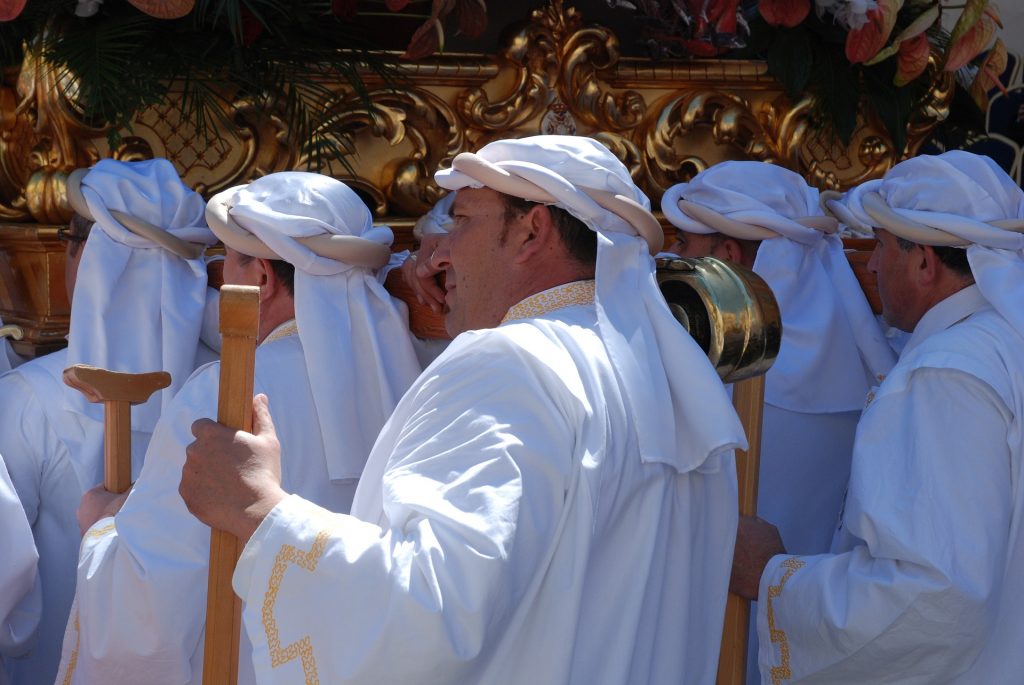
They practiced well beforehand, but it is still executioner work. Especially since it can be quite warm in Spain by Easter. Not infrequently, the costaleros pause every dozen meters. How would you be yourself?
5. Their pointy hats have nothing to do with the KKK
Do you get the impression that some escaped members of the Ku Klux Klan are walking along in procession? Rest assured, their capirotes, the white habits with pointy hats, have nothing to do with a riot of racism or right-wing radicalism. The hoods date back to the time of the Spanish Inquisition. Anyone with a religious crime on their record back then had to put on such a pointed hat and walk around the streets. The people laughed at them,but at least the sinners could wallow in anonymity.
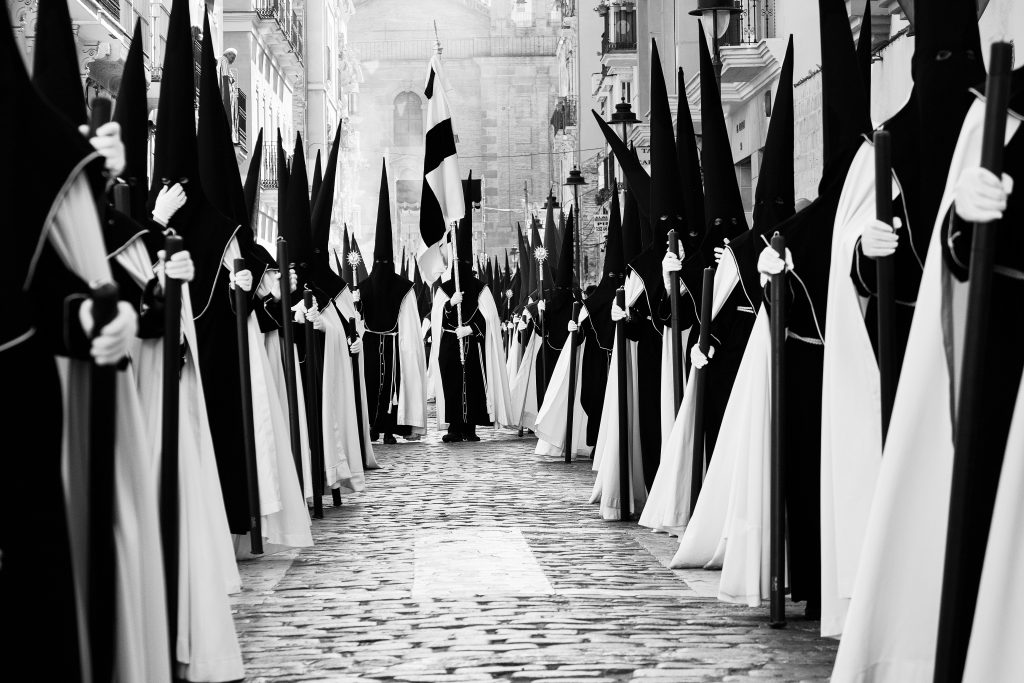
Anno 2019, the capirotes symbolize penance and the Calvary journey of Jesus. Accompanied by thick clouds of incense, the cap bearers (they are called nazerenos ) move through the streets with candles in their hands. Some walk barefoot, others carry wooden crosses or are shackled with chains.
6. Women mourn the death of Jesus
Women also walk in the processions. Although they don't venture into the power play from point 5. Instead, they mourn the death of Jesus and they show it with their clothing. For example, many wear a mantilla, a veil of black lace with a high crest on the back of the head. It is a structure that even Antwerp Cathedral would envy. Sober clothing is essential during the Easter season anyway. Just last year, for example, Alicante gave fashion prescriptions to the women who participated in the city's procession. They were not allowed to paint their lips red or wear skirts above the knees.
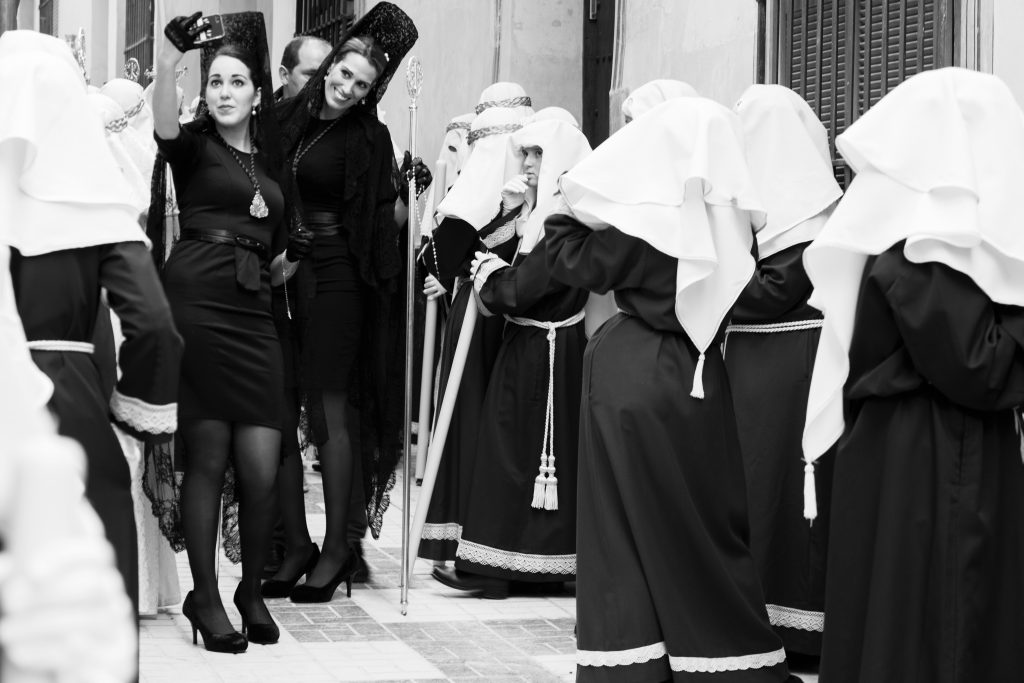
7. An umbrella is not enough when it rains at Easter in Spain
Admittedly, it sounds like a peasant proverb, one of those old sayings that Frank Deboosere would pass along at the end of his weather report. But it's true: rain is an insurmountable game-changer for processions in Spain. Some statues are centuries old and should not get wet. Moreover, the wet, slippery streets invite unfortunate slips. No circumstances to forward antique pieces. Therefore, when it rains, the processions often do not go on.

8. Your scale goes off during Easter in Spain
These days there are also chocolate Easter eggs in Spanish stores, but it is not a local tradition as we know it in Belgium. Still, it is best to schedule your diet at another time.
Spaniards love conviviality and that includes food - lots and lots of delicious food. Families gather to enjoy a huge feast. Garlic soup with a fried egg is popular, as are seafood, stockfish balls and stuffed peppers. Traditionally, Spaniards eat no meat or less meat during the Easter season.
For the forgiveness of sins, many Spaniards hand out sweets during Holy Week. Those who don't, the popular wisdom goes, can write the kingdom of God off on their fingers. Members of the fraternity are digging into their barrigas, fat bellies of bags of candy tied together, and handing out candy canes, glazed apples, toasted almonds and cotton candy.
And how about the following dishes?
>>Torrijas. Alias the Spanish version of lost bread: sandwiches soaked in milk and egg then fried in olive oil and generously sprinkled with sugar or topped with honey. Sometimes a burnt sugar coating finishes it off. The best torrijas can be found in the Basque Country.
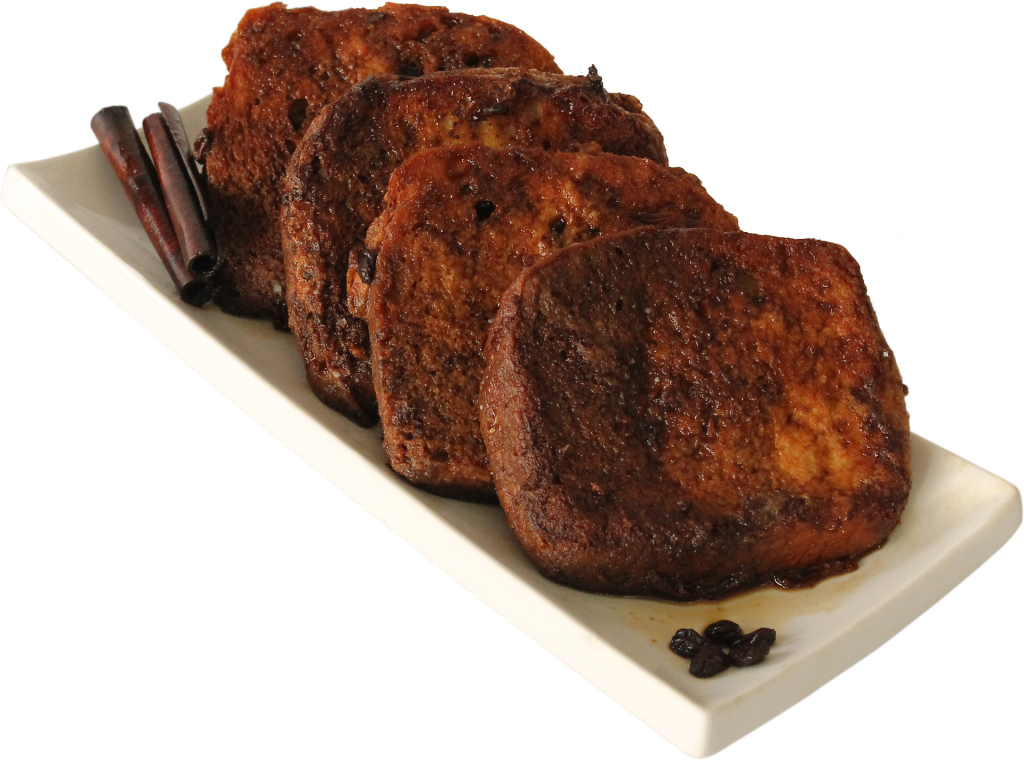
>>Pestiños. Small pastries made of sesame dough, first fried and then glazed with honey or sugar, sometimes flavored with anise or orange. Popular throughout Spain, but especially in Andalusia.
>>Potaje de vigilisa. A hearty stew of spinach, chickpeas and cod, traditionally eaten on Good Friday.
>>Mona de Pascua. The famous Easter cake, especially famous in Catalonia and Valencia. Rings of sweet bread, sometimes with (chocolate) eggs on top and decorated with crystallized fruit, little chicks, colored feathers and you name it. Tradition has it that godfather and godmother give the cake to their godchildren.
>>Bueñelos. A kind of mini malt balls made of fried dough, usually sprinkled with sugar. Especially popular in the Valencia region (so also on the Costa Blanca), where snacks are made with pumpkin.
>>Flores de Semana Santa. Literally: Easter flowers. They are sweet baked buns that resemble flowers in shape.
9. Every city has its own traditions
All of Spain celebrates Semana Santa - the big metropolises like Barcelona and Seville, as well as the small, cute towns in the countryside. And everywhere they do keep slightly different habits. The inhabitants of Andalusian Castilblanco de los Arroyos, for example, set fire to dolls made of straw. Those represent Judas, the betrayer of Jesus. In other towns in Andalusia, Roman soldiers walk in the procession.
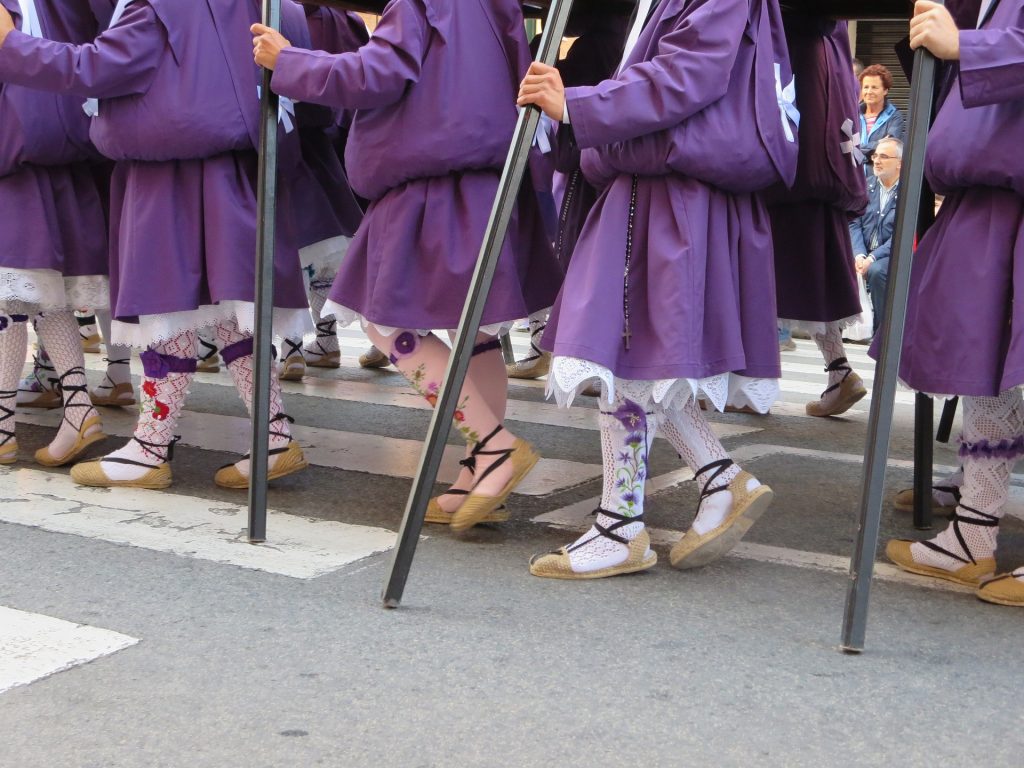
In Verges, Girona, five residents dance a danse macabre like skeletons, to remind us all that we only have a time on the globe and it is best to enjoy it to the fullest. We should not tell that to the people of Léon. They hold a mass pub crawl on Maundy Thursday. And this is to commemorate a notorious city drunk/whore runner who was run over by a garbage truck in 1929 as he stood urinating against the city walls.
Or how about Málaga? In 1759, the inmates of the local prison there rioted heavily when they were told that the Easter procession would not take place. The reason for the cancellation: an outbreak of plague. Granted, we don't think this is an illogical reason, but go explain it to that criminal rabble yourself. Passons, the prisoners broke out and single-handedly carried a statue of Jesus through the streets, before bravely reporting back to their cells. King Charles III of Spain was impressed by their discipline and promptly decided to release two dozen prisoners. To this day, the tradition exists. Every year a fortunate inmate receives clemency in Málaga on Holy Wednesday.
10. The Costa del Sol is a great base to experience Semana Santa
Just as Mol-Ginderbuiten and Rozenberg bicker over who now organizes the most beautiful procession of lights, the debate in Spain is about the processions of Málaga and Seville. The two Andalusian cities boast the country's most famous processions. During those processions, there is a lively festival atmosphere. This is completely different from the processions in the north, which are much more subdued.
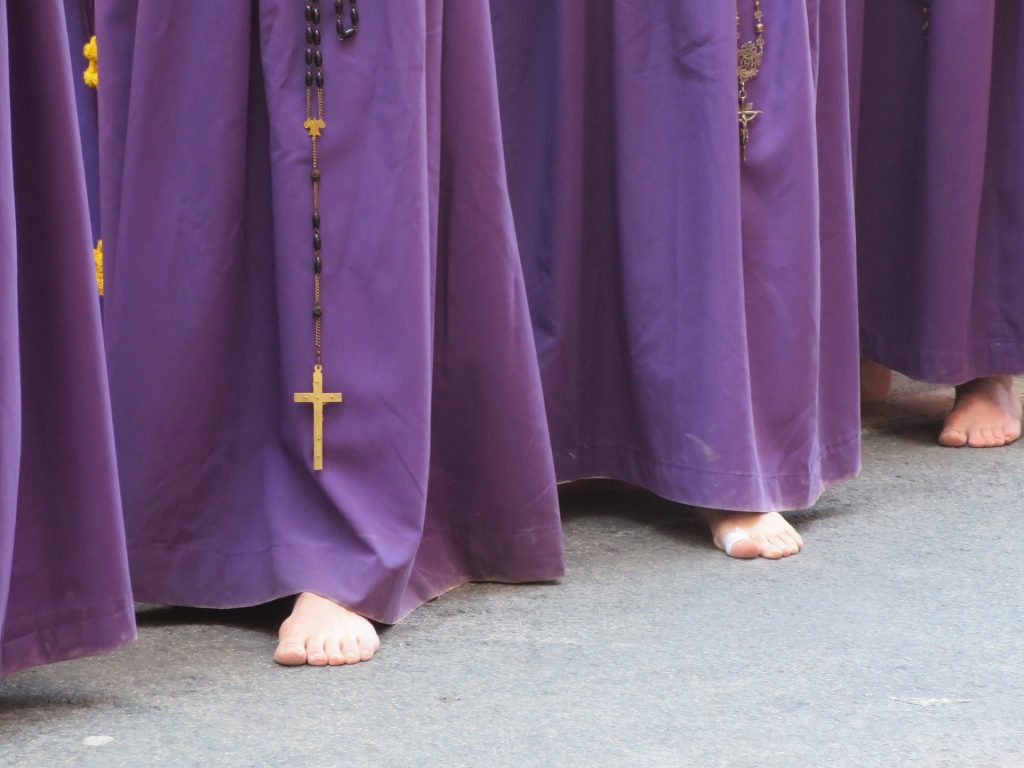
However, the popularity of Semana Santa in Seville and Málaga has a downside: everyone wants to be there. Hotel and apartment prices shoot up swiftly during the Easter period. Despite this, all the rooms were booked up a year before.
Fortunately, you don't have to worry about that if you own a residence on the Costa del Sol. Or will you choose the Costa Blanca? Southern Spain is not just heaven on earth during Semana Santa. Partner with Gold Estates to find your dream home and you may be celebrating Easter in Spain next year. Under the blazing sun, that speaks volumes.









